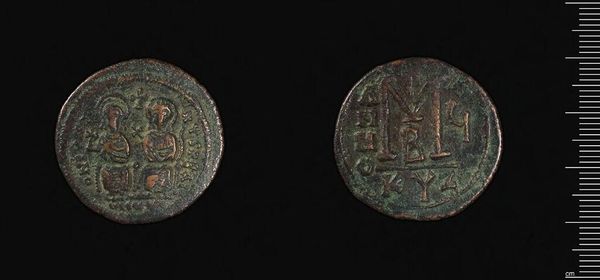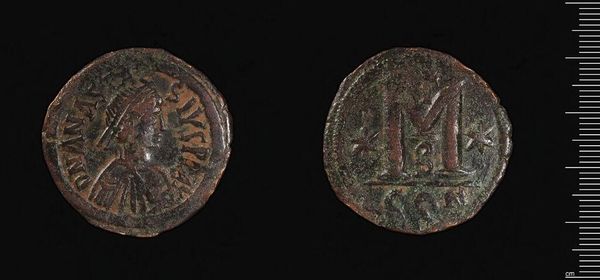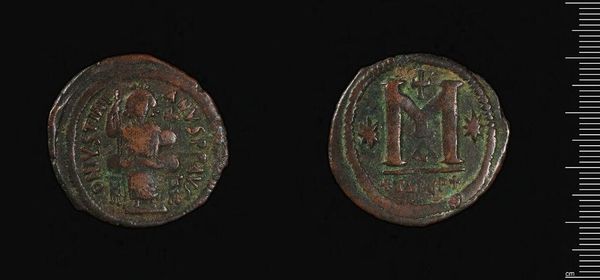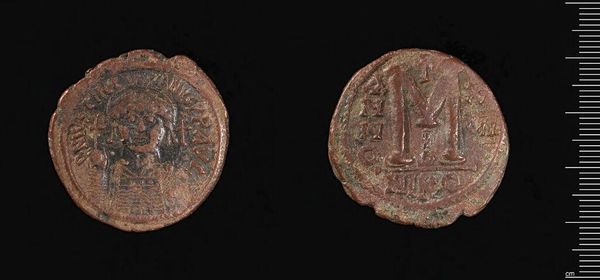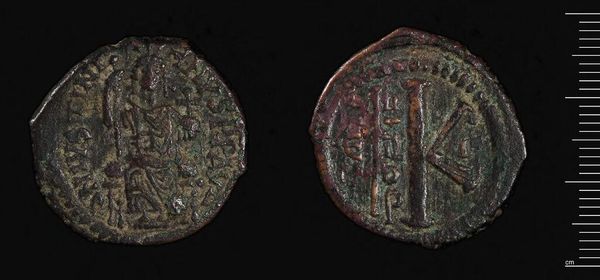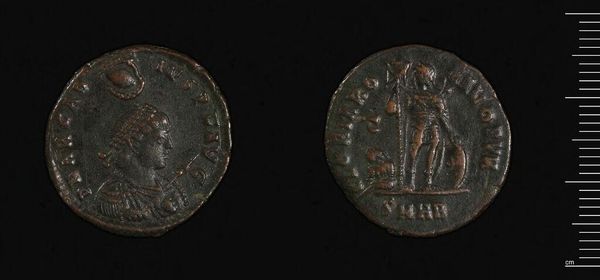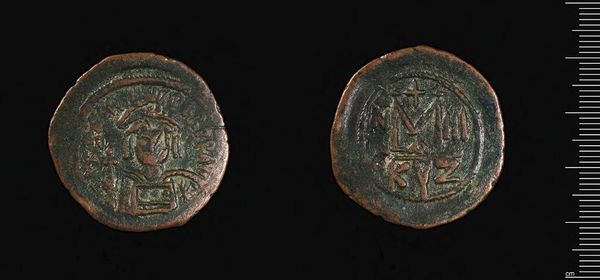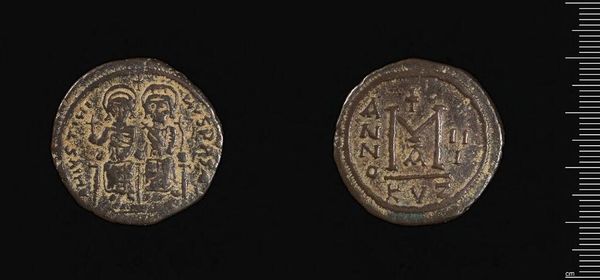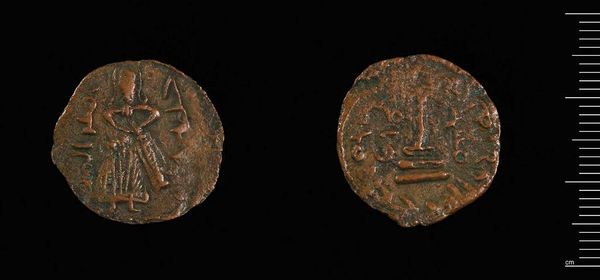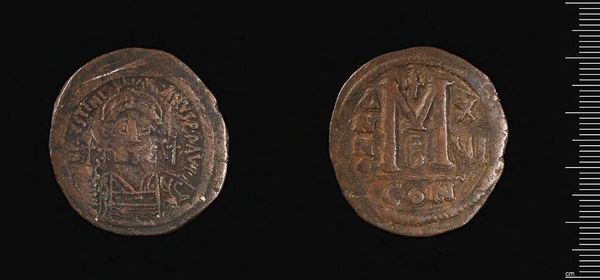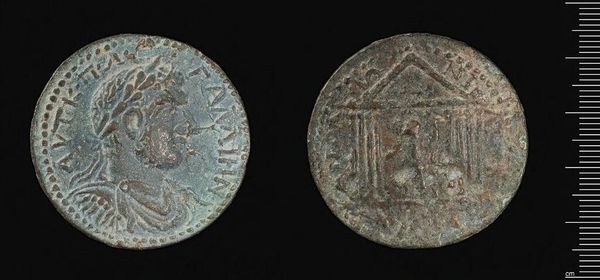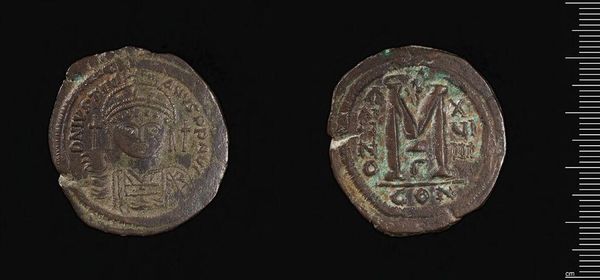
Coin of Thessalonike under the Emperor Philip I (the Arab) c. 3th century
0:00
0:00
Dimensions: 6.91 g
Copyright: CC0 1.0
Curator: This coin, now residing in the Harvard Art Museums, was produced in Thessalonike during the reign of Emperor Philip I, known as Philip the Arab. It weighs about 6.91 grams. Editor: It has a weighty feel, doesn't it? Both literally and figuratively, there's a lot of history compacted into this small circular form. The corrosion almost adds to the drama. Curator: Absolutely. The Emperor’s profile links us to Roman power, while the depiction on the reverse side is likely a reference to a regional deity or architectural icon, representing local identity under imperial rule. Editor: The incised lines create a very shallow relief, and the patination obscures the clarity of the images. It’s like a ghost of an idea; the semiotics are almost hidden. Curator: The imagery would have been quite potent for its time, asserting both imperial authority and regional pride. It speaks volumes about the complex dynamics of power and identity in the Roman Empire. Editor: I see it more as a study of the interplay of form and decay. The corrosion softens the rigid structure, reminding us that even empires are ephemeral. Curator: Perhaps. It offers insight into the symbolic language understood by people of the past. Editor: And a potent reminder of the passage of time.
Comments
No comments
Be the first to comment and join the conversation on the ultimate creative platform.
